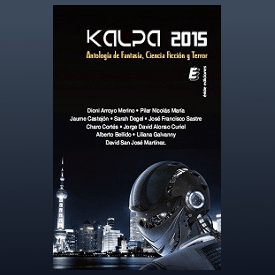I love science fiction stories with aliens. There are some good ones without aliens, but they’d probably be better if they threw in some aliens. OK, maybe not, but I still love aliens.
I write space-based science fiction often, and my novels have featured aliens. To some, aliens may just be a weird, cool thing, a space monster, or something incomprehensible. To me, they allow the opportunity to show off what it is to be human, and often human in a particular modern way, in contrast to the alien. Some others might say that you can do the same thing by feauturing human cultures from other parts of the world or different times, but that is still within the realm of the human. The possibilities are limited.
Anyway, what I wanted to do here was break down the “parameter space” for stories involving aliens and what the possibilities are.
1. First, Second, or Nth Contact. The very first encounter with aliens sets the stage for a particular kind of story that will be about the nature of our realtionship (e.g. Contact vs. Independence Day). Second contact stories, to me, take place in an environment in which humans have encountered aliens regulary but are not openly integrated with them (e.g. Men in Black, the Federation’s dealings with Romulans in Star Trek). Then there’s total integration, where humans are just one species among many in a larger civilization (e.g. Star Wars, Far Scape).
2. Tech Level. There are three possibilities. Humans have lesser, equivalent, or greater tech levels than the aliens. The universe of Star Trek provides examples of all of these. There are aliens much more advanced (e.g., Q, among others who find the Enterprise crew an amusing toy), roughly equivalent (Romulans, Klingons, Vulcans, etc.), and less advanced (every story line involving a captain struggling with the Prime Directive). Each of these presents a particular dynamic.
3. Humanoid, or not. I’m being very general about “humanoid” here and not referring to human-shaped or bipedal or anything like that. Let me make the case by pointing to Solaris as an example of not-humanoid. It’s so alien the whole story is just about getting an idea of what it is and how to relate to it. The Black Cloud by Frank Hoyle is another example. In these cases, the alien is too alien to make a viewpoint character even, and the story must involve trying to understand them, and perhaps failing.
4. Intelligent or not. The Andromeda Strain and Tribbles are examples of interesting aliens that you’re not going to have a meaningful conversation with.
5. Alive or not. I love a good alien artifact/machine story. Glimpses of ruins on an alien world, or a derelict spaceshipe (e.g. Planet of the Vampires or Alien), give me a thrill.
6. Present or not. Aliens can be part of a story merely via communication (ala SETI searches or Species) with no direct physical interaction.
7. Natural or artificial. There’s a lot of talk about post-human existence and sending robots or androids into space, or uplifting species, which implies a heirarchy of aliens. Many a good science fiction story has started with the premise that more advanced species have set the stage for species that they have created to follow.
8. Common or rare. In stories in which interstellar travel is relatively cheap and easy, the issue of how rare aliens are is necessary to determine. The new Battlestar Galactica, and Asimov’s Foundation series, had few if any aliens present. Intelligent alien life was rare. In Star Trek or Star Wars, however, pretty much every planet out there had something weird and nasty crawling around on it.
9. The importance of Earth/humans to aliens. There are stories in which aliens travel vast distances to drink our water and eat us (e.g. V), and other stories in which Earth is just another backwater planet, mostly harmless (Hitchhiker’s Guide to the Galaxy or The Last Starfighter).
10. The nature of aliens to us. Friends? Enemies? Competitors? Mentors? Anal probers?
I’d love to see one of those cool, hand-drawn infographics breaking things down. There are some great stories from nearly every combination of the above, some very interesting corners of parameter space. They all provide the opportunity to more clearly see what it means to be human, our strengths and weaknesses, our triumphs and tragedies. I love the entire concept of the alien, and can’t get enough stories about them. Here’s a list of movies featuring extraterrestrials, and here’s a list of lists of fictional extraterrestrials.
There are so many good stories to choose from, but I wanted to recommend some of my favorite novels featuring aliens: A Fire Upon the Deep by Vernor Vinge, Ringworld by Larry Niven, Startide Rising by David Brin, Probability Moon by Nancy Kress, The Forever War by Joe Haldeman, The Legacy of Heorot by Niven, Pournelle, and Barnes, The Mote in God’s Eye by Niven and Pournelle, Rendezvous with Rama by Arthur C. Clarke, The Einstein Intersection by Samuel Delany, The Left Hand of Darkness by Ursula K. Le Guin, Gateway by Frederik Pohl, Camouflage by Joe Haldeman, Hyperion by Dan Simmons, The Pride of Chanur by C. J. Cherryh, Spin by Robert Charles Wilson, Grass by Sheri Tepper, Old Man’s War by John Scalzi, and, well, there’s a lot more! If I missed your favorite it may be because I haven’t read it. Leave a recommendation, please!












1 Comment